Since California became the first state to require the teaching of LGBTQ history in 2011, increasing numbers of books and resources have become available for parents and teachers. (From Time, see As More States Require Schools to Teach LGBTQ History, Resources for Teachers Expand.)
For a hyperlinked list of curriculum guides, lesson plans, primary sources, and books, see Teaching LGBTQ History.
LGBTQ History and Why It Matters is a comprehensive lesson with discussion questions and activities for middle-grade- and high-school-level students. Essential question: How can the way that history is taught and remembered create or reinforce “in” groups and “out” groups in a society?
Table of Contents
All Kinds of Families
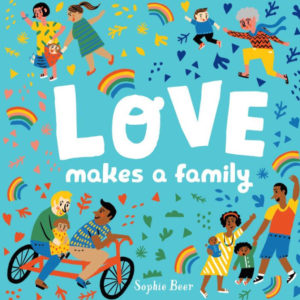 |
Sophie Beer’s Love Makes a Family (Dial, 2018) lists many definitions of love – “Love is baking a special cake.” “Love is finding the biggest puddle.” – each colorfully illustrated with a different family, some with two mothers, two fathers, just one parents, or one of each. For ages 2-4. |
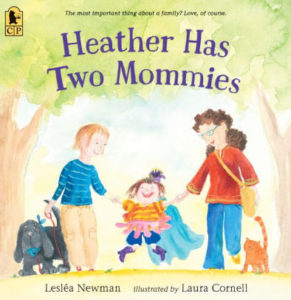 |
In Leslea Newman’s Heather Has Two Mommies (Candlewick, 2016), Heather’s favorite number is two – after all she has two hands, two feet, two purple cowboy boots, and two mommies, Kate, a doctor, and Jane, a carpenter. When she starts school, she discovers that – unlike many of her classmates – she doesn’t have a daddy. With the help of a thoughtful teacher, however, Heather soon learns that there are many different kinds of families – and the important thing about families is that they love each other. For ages 3-7. Also by Newman for the same age group, see Mommy, Mama, and Me (Tricycle Press, 2008) and Daddy, Papa, and Me (Tricycle Press, 2008). For more on Heather Has Two Mommies and LGTBQ books for children, see this article from the New York Times. |
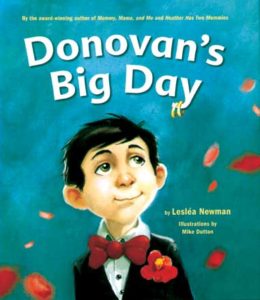 |
In Leslea Newman’s Donovan’s Big Day (Tricycle Press, 2011), Donovan’s two moms are getting married – and he’s going to be the ring bearer. For ages 3-7. |
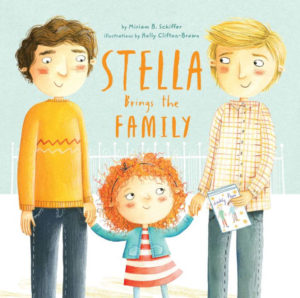 |
In Miriam B. Schiffer’s Stella Brings the Family (Chronicle Books, 2015), Stella’s class is celebrating Mother’s Day – but Stella doesn’t have a mom. Instead she has two dads. But Stella comes up with the perfect solution. For ages 4-7. |
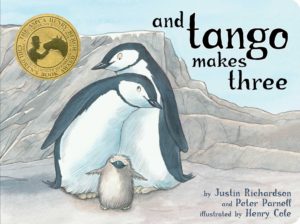 |
In Justin Richardson’s And Tango Makes Three (Little Simon, 2015), Roy and Silo – a pair of male penguins at the Central Park Zoo – form a family by adopting at baby chick of their own. For ages 4-8. |
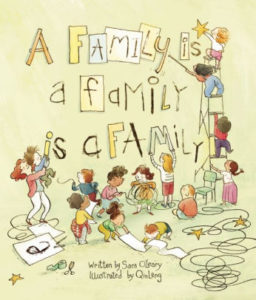 |
By Sara O’Leary, A Family is a Family is a Family (Groundwood Books, 2016) is a picture-book account of the many different kinds of families – all special, as long as they’re full of caring people. For ages 4-8. |
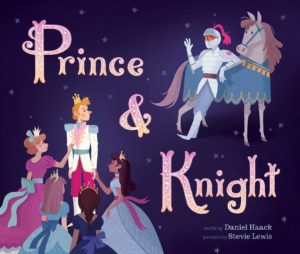 |
In Daniel Haack’s Prince & Knight (little bee, 2018), a rhyming fairy tale, the prince and the knight join forces to fight a dragon – and find that they’ve fallen in love. (Not everybody wants to marry a princess.) For ages 4-8. |
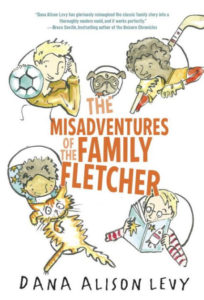 |
Dana Alison Levy’s The Misadventures of the Family Fletcher (Yearling, 2015) is the hilarious and delightful story of the Fletchers: two dads and their four multiracial adopted sons – Sam, Jax, Eli, and six-year-old Frog. Plus Sir Puggleton, the dog, Zeus, the cat, and Flare, Frog’s imaginary cheetah. For ages 9-12. |
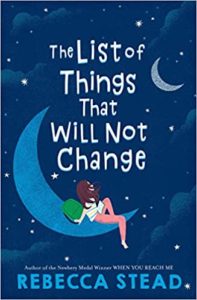 |
In Rebecca Stead’s The List of Things That Will Not Change (Wendy Lamb, 2020), Bea’s parents are divorcing and Bea’s dad is marrying his boyfriend Jesse – which Bea hopes will bring her a new sister, Jesse’s daughter. It’s not easy forming a new family, however, and Bea seeks reassurance from her notebook listing things that will not change – that is, she and her parents will always love each other. For ages 9-12. |
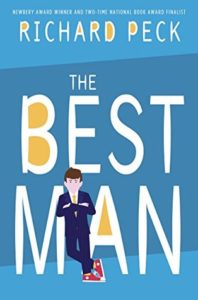 |
Richard Peck’s The Best Man (Puffin, 2017 is a wonderful account of male relationships from the point of view of 11-year-old Archer Magill, culminating in the wedding of Archer’s Uncle Paul and his fifth-grade teacher, Ed McLeod. For ages 9-12. |
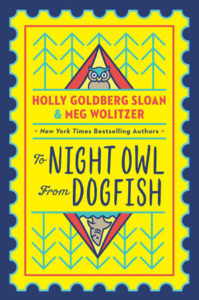 |
In Holly Goldberg Sloan’s To Night Owl from Dogfish (Puffin, 2020), Avery – bookish, afraid of water, and from New York City – and Bett, a California girl who loves animals and the ocean – are thrown together at camp when they find that their gay dads plan to marry. For ages 10-12. |
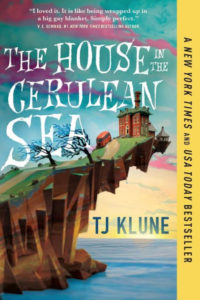 |
T.J. Klune’s The House in the Cerulean Sea (Tor, 2020) is a delightful and heartwarming fantasy in which Linus Baker, a caseworker in the Department in Charge of Magical Youth (DICOMY), is sent to evaluate six dangerous children – a gnome, a sprite, a wyvern, a strange green blob, a were-Pomeranian, and the Antichrist – at the Marsyas Island Orphanage. There he meets the orphanage director Arthur Parnassus. As Linus becomes more involved with Arthur and the children, he begins to doubt the legitimacy of DICOMY’s mission. It’s all about overcoming prejudice and learning to love – and there’s a wedding. For teens and adults. |
